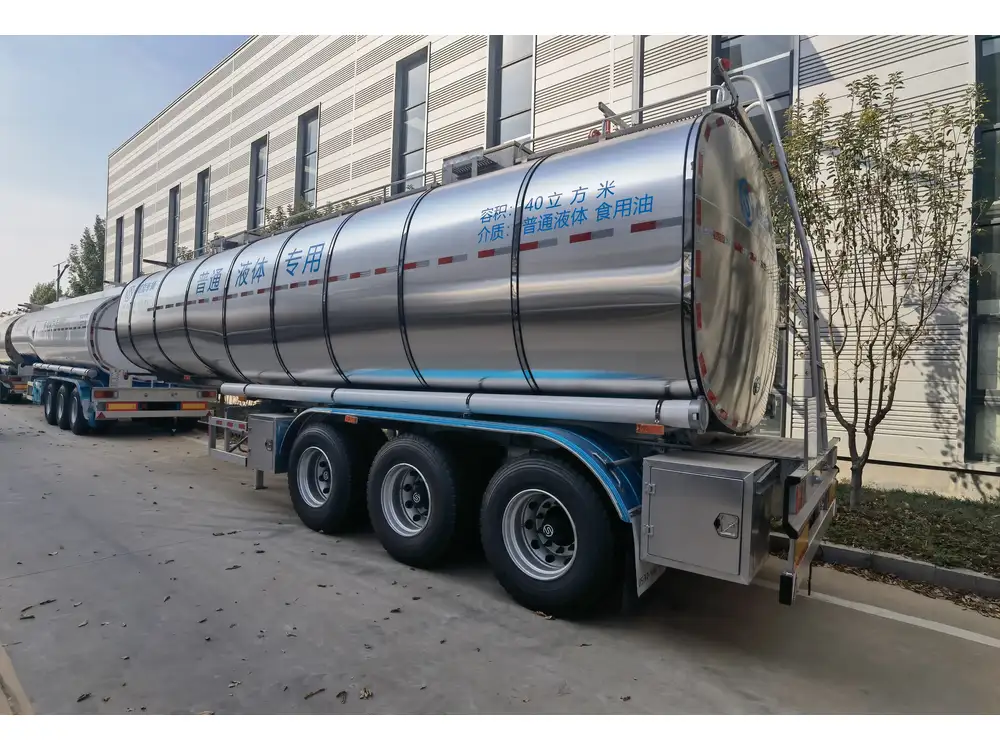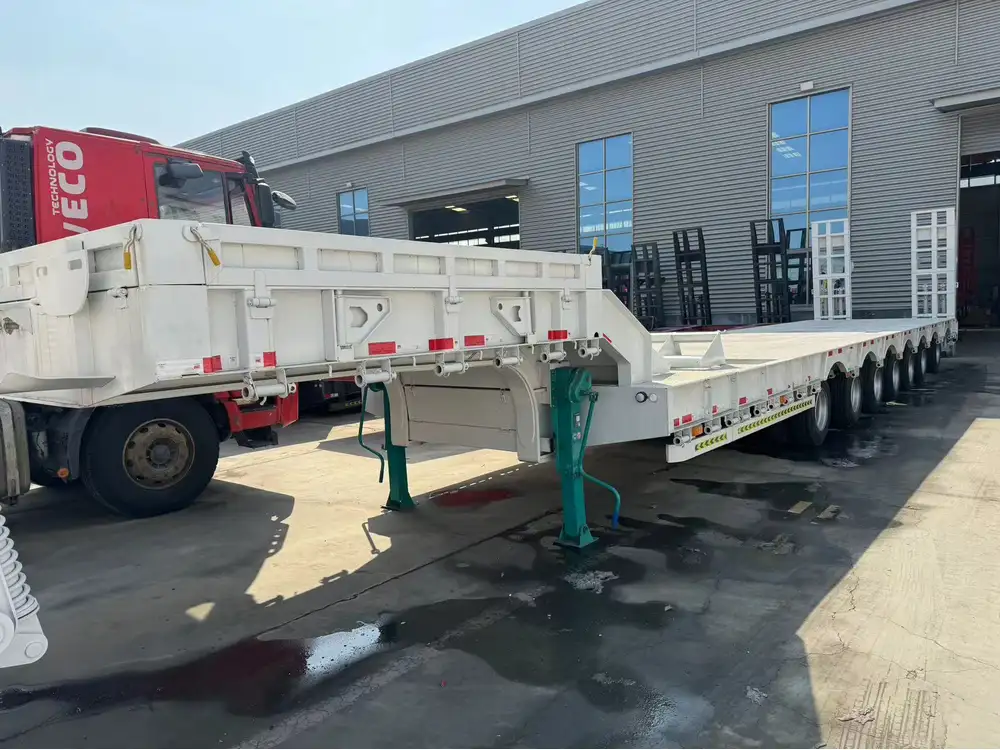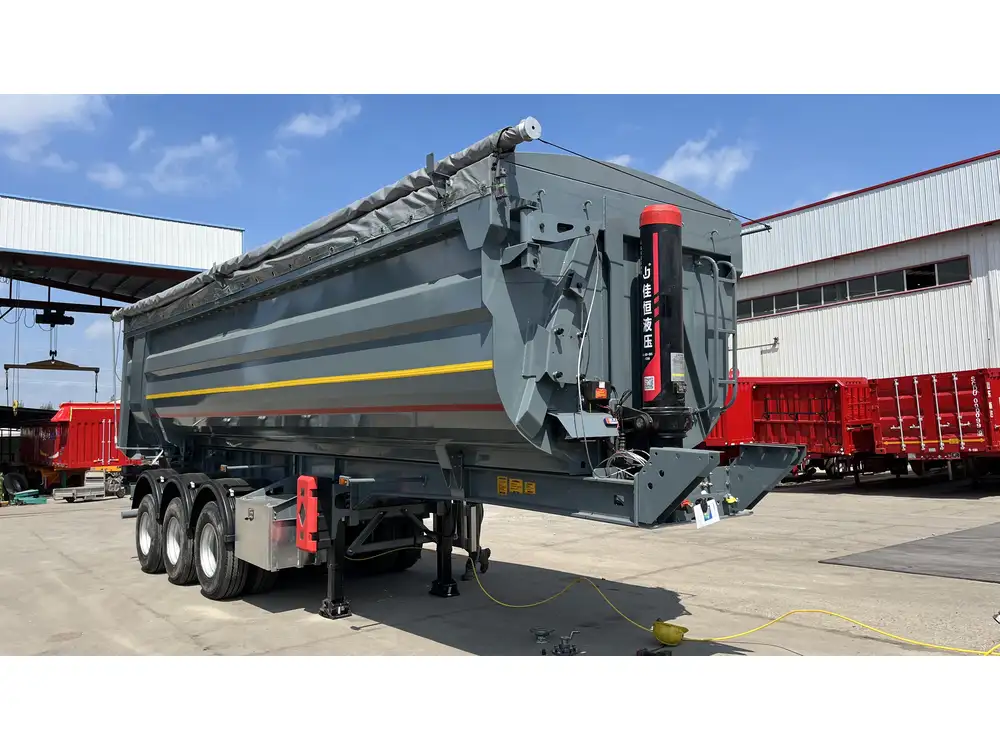Climbing into a semi-trailer is a task that demands attention to safety, technique, and understanding of the semi-trailer structure. Although it might seem straightforward, improperly ascending or descending can lead to accidents or injuries. This comprehensive guide outlines the various aspects involved in the process, ensuring you and your team can perform this task safely and effectively.
Understanding the Semi-Trailer
Before diving into the climb, it’s crucial to appreciate the components of a semi-trailer. This knowledge helps in recognizing safe landing zones and grip points as you scale the side.
| Component | Description |
|---|---|
| Frame | The skeleton structure that supports the entire trailer. |
| Kingpin | The pivot point where the trailer meets the truck cab, crucial for stability. |
| Axles | Components that support the trailer’s weight and assist in steering. |
| Suspension System | Absorbs shocks and provides a smoother ride, important for handling weight shifts. |
| Chassis | The base structure that supports the cargo area. |
| Cargo Area | The open space where goods are loaded; it requires careful climbing. |
Importance of Knowing Your Trailer’s Dimensions
Understanding the dimensions of your specific semi-trailer model is vital for ensuring a safe climb. Heights, widths, and particularly the distance between the ground and the entry point can significantly affect how you approach the climb.
- Standard Dimensions: Semi-trailers typically have a height ranging from 13.5 to 14.5 feet.
- Entry Points: Climbing areas are often equipped with steps or ladders; knowing their design can facilitate efficient climbing.

Safety Gear and Precautions
Essential Safety Equipment
Using appropriate safety gear minimizes risks during the climbing process. Consider the following:
- Non-Slip Footwear: Shoes with good traction reduce the chance of slips.
- Gloves: Protects your hands and ensures a better grip.
- High-Visibility Vest: Enhances visibility if working in a busy environment.
- Hard Hat: Protects against possible head injuries from overhead hazards.
Pre-Climb Safety Checks
Prior to climbing into a semi-trailer, perform comprehensive safety checks:
- Inspect the Trailer: Check for structural integrity, loose components, or any visible hazards.
- Evaluate Surroundings: Ensure the area around the trailer is clear of obstacles and traffic.
- Ensure Stability: The trailer must be properly secured with wheel chocks and brakes engaged.

Techniques for Climbing into a Semi-Trailer
Step-by-Step Climbing Technique
Follow these detailed steps to climb into a semi-trailer with confidence and poise:
- Position Yourself: Stand close to the back of the trailer, making sure your feet are positioned securely on the ground.
- Find the Entry Point: Identify the steps or ladder on the rear or side of the trailer. Ensure it is in good condition.
- Use Handles or Grip Points: Most trailers have handles or reinforced areas. Maintain three points of contact as you ascend.
- Climb Steadily: Move one leg at a time, ensuring your footing is stable. Keep your body low and use your hands for balance.
- Check Your Path: Before reaching the top, scan the area inside to ensure there’s enough space to enter without hitting your head or getting stuck.
Alternative Methods
In situations where a traditional climb is unfeasible due to accessibility challenges, consider:
- Using a Step Ladder: This approach sometimes provides greater stability if the semi-trailer is particularly high.
- Platform Lifts: For larger cargo loads or unusually high trailers, powered lifts might be the only safe means of access.

Top Tips for Effective Climb Management
- Communicate: Ensure you alert nearby personnel before you start climbing so they can assist or provide help if you encounter problems.
- Don’t Rush: Take your time when climbing; most accidents occur due to hurried movements.
- Be Aware of Weight Shift: As you enter, the trailer’s cargo could shift. Be prepared and maintain equilibrium.
Common Mistakes and How to Avoid Them
Understanding and identifying potential pitfalls can make a significant difference in safety and efficiency.
| Common Mistakes | How to Avoid |
|---|---|
| Rushing the climb | Focus on steady, deliberate movements. |
| Neglecting surroundings | Be observant; watch for moving vehicles and personnel. |
| Failing to check equipment | Always inspect the entry points and surroundings. |
| Inadequate grip | Use both hands and feet adequately for support. |
Handling Cargo Safely
When climbing into a semi-trailer, you’ll need to manage and access cargo frequently. Understanding how to do this safely is key.

Safe Cargo Management Practices
- Secure All Loads: Before accessing the trailer, ensure that all cargo is packed securely to avoid shifting.
- Use Proper Lifting Techniques: When removing items, bend at the knees and lift with your legs—not your back.
- Avoid Overloading: Be conscious of the weight limits specified for both the truck and trailer.
- Maintain Balance: Carry only what you can manage to maintain your center of gravity.
Climbing Down: An Equal Part of Safety
Ascending is only half of the equation; descending from a semi-trailer requires its own set of precautions.
Steps for Descending Safely
- Position Feet Carefully: Turn to face the direction of descent and place toes on the entry point.
- Use Grip Points: Always hold onto solid structures while lowering your body.
- Control Your Descent: Move slowly, keeping a hand on the trailer to maintain balance.
- Watch Your Step: Be aware of lower obstacles once your feet are on the ground.

Additional Tips for Safe Descending
- Count Your Steps: Before starting your descent, mentally prepare for each step to maintain focus.
- Clear the Area: Like ascending, notify others when you’re descending and ensure the area is clear to avoid accidents.
Conclusion: Emphasizing Safety and Proficiency
The act of climbing into a semi-trailer is integral to the workflow of transport and logistics. Understanding the structural components of the trailer, employing appropriate safety gear, mastering climbing techniques, acknowledging common mistakes, and practicing safe cargo management habits is crucial in ensuring not only personal safety but also the safety of those working around you.
By adhering to these guidelines, you contribute to a culture of safety and professionalism within your organization. Collectively, let us prioritize this essential task to achieve optimal efficiency while reducing risks associated with semi-trailer access.
This guide serves both as a learning tool for seasoned professionals and a foundational resource for newcomers to the trucking and logistics field. Ultimately, ensuring that every climb is safe instills confidence in your operations and engenders a workplace environment focused on safety first.



